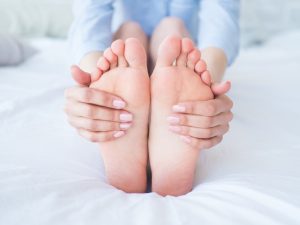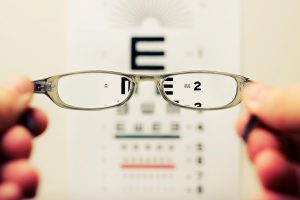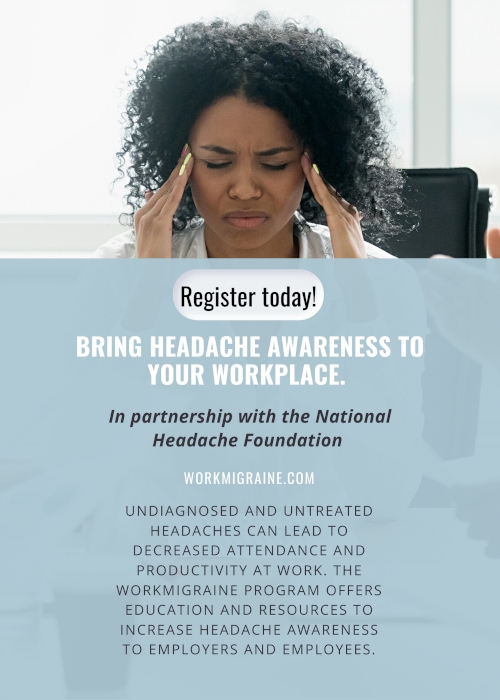How to Bring Headache Awareness to the Workplace
Tuesday, May 11th, 2021
Promoting a happy and healthy work environment is essential to having a productive, prospering workplace. Migraines are a common deterrent to both productivity and attendance in employees. Outside of the general stress or tension headaches that plague many people, over 40 million Americans suffer from the neurological disease of Migraine headaches. Many migraine sufferers remain undiagnosed and untreated. Here are some ways to bring education and awareness to your workplace.
- Education and Treatment Options
According to recent studies, 52% of Migraine sufferers remain undiagnosed. Common over-the-counter treatment medications are insufficient to treat the multiple debilitating symptoms associated with Migraines. These symptoms may include nausea, vomiting, sensitivity to light and sound, and difficulty concentrating. All these things make it extremely difficult to work, leading to absences from work which we refer to as “absenteeism.”
Still, others are afraid of being labeled as unreliable and choose to stay at work amidst their symptoms. This leads to a decreased level of performance and a term we call “presenteeism.” Employees are present in the body at their job, but they are working at far less than optimal capacity. Presenteeism accounts for most of the cost to a company due to headaches.

The National Headache Foundation has created a program called “WorkMigraine” with education modules geared towards Employees, HR, and Employers respectively. These modules and resources are influential in educating individuals on headaches and treatment options. They have the potential to significantly decrease the loss of productivity due to headaches.
2. Omit or Minimize Triggers
Creating an environment that is sensitive to the needs of headache sufferers is a simple way to bring wellness to your workplace. If possible, omit or minimize the following triggers of headaches and migraines:
- Stress – promote a healthy lifestyle and relaxation techniques.
- Noise – minimize loud talking, music or machinery. Provide earplugs if needed.
- Light – flickering fluorescent lights can be problematic. A more indirect light source may be beneficial. Consider encouraging employees to use blue light glasses to help with computer screen glare.
- Odors – enforce a cologne-free workplace. Ensure there is proper airflow and fresh air. Designate a specific area for eating, away from workspaces.
- Posture – use ergonomic chairs and desks. Offer standing desks for those who may benefit from that option.

Some headaches may be avoided by limiting these common triggers. In addition, providing a dark, quiet space for employees who are struggling with headaches may prevent them from getting worse. This can allow an employee to recover quickly and be able to get back to work.
If all else fails, understand that an employee at work suffering from a migraine will not perform well. Encourage them to seek treatment and rest.
3. Have an Open Dialogue
Open communication with your employees is essential to good morale and finding solutions to any problems. When an employee can partner with their employer to come up with a plan, there can be progress. Have an open dialogue with employees about their specific headache triggers. Provide encouragement to seek treatment from a healthcare professional. Go over options for sick days and ways they can make up time they may miss due to their headaches.

Migraine sufferers are not unreliable. They have a neurological disease that needs attention and treatment. It is difficult to see the symptoms of a migraine outwardly, but with open communication, absenteeism and even presenteeism can be lessened and even avoided.
Visit The National Headache Foundation for more information and resources on Headache Awareness and the WorkMigraine program.
COVID-19: What We Need to Know
Saturday, March 14th, 2020
The world has been affected by this coronavirus outbreak in a way that none of us expected a few weeks ago. With the widespread reach of the media and social networks, we have the double-edged sword of a surplus of information. It can be difficult to wade through it all and make sense of what it means. There are two extreme ends of the spectrum, oscillating between extreme panic to an almost blase attitude. There is some real cause for concern, but we’d like to help the situation by compiling some helpful facts and tips for how to handle our current situation.

Preventing the Spread of Disease
The disease has been found to spread most easily from close contact (within 6 feet) from person to person. The transfer of the virus can occur from unprotected coughing or sneezing. The CDC has been extremely clear in describing the measures we can all take to prevent the spread of this highly contagious virus.
- Wash hands frequently, especially after using the bathroom, coughing or sneezing, touching any potentially contaminated surfaces.
- Keep your unwashed hands away from your face where germs can obtain easy entry into your body.
- Stay home when you are sick.
- Keep away from people who are infected with the virus.
- Put distance between yourself and large groups of people if there is a spread in your community.
- Wear a facemask ONLY if you are sick or caring for a sick person who may be unable to wear one.
- Clean and disinfect frequently touched surfaces.

As employers, how can we keep our workplaces healthy?
- Encourage employees to stay home when sick by providing flexible sick leave policies.
- Enable as much work to be done remotely as possible during community outbreaks.
- Separate sick employees who may become sick during the workday.
- Encourage routine hand washing.
- Perform thorough routine cleaning of frequently touched surfaces.
- Educate employees on symptoms or coronavirus.
Symptoms of Coronavirus
The coronavirus is a respiratory illness exhibiting the following symptoms. Keep in mind that people may respond to the virus in different ways. These symptoms may appear up to 14 days after exposure:
- Fever
- Cough
- Shortness of breath
Most cases of the virus have been mild and recoverable. However, there are some who are at increased risk for the most severe cases, potentially becoming fatal. Those at high risk include the elderly and those with preexisting conditions such as heart disease, diabetes, and lung disease. If you or someone close to you fit into the high-risk category, take extra precautions.
If you do exhibit symptoms don’t go to the doctor. Call your doctor and describe your symptoms and possible exposure to the illness. They can advise you if you need to be tested and tell you what your next steps should be.

Be a Kind Human
Remember that we are all in this together. Even if you are not at a high-risk for infection, you may unknowingly be in close contact with people who are. Consider the people around you. Take all the precautions advised by the CDC to prevent or lessen a widespread outbreak in your area.
Be considerate when stocking up on supplies and only purchase what you need. Leave some for others rather than overbuying out of panic or fear.
Keeping Anxiety at Bay
In order to keep anxiety at bay, it may be best to limit your exposure to social media outlets. Protect your mental health by keeping things light, talking to your loved ones and staying focused on the positive. Even though this virus isn’t well known, much progress has been made already. The mass cancellations are for our safety and prevention and should be comforting more than inciting fear. It’s a means of stopping the spread of the virus so that it stays under control.
For much more specific information on the coronavirus and how to stay healthy, especially as businesses and employers, visit the official CDC website.
Healthy Feet on the Job
Wednesday, February 19th, 2020
Our feet do the grunt work by supporting our entire bodies every day. They carry us from place to place from infancy through adulthood covering upwards of 100,000 miles. Our feet are the very foundation for our bodies but are typically ignored until there’s a problem. Once there’s a problem, it can affect our entire body’s overall health. Since our feet work so hard for us, why don’t we take care of them before any problems begin? Let’s go over some ways we can care for our feet and keep them healthy as they carry us through both our workday and life.
Proper Footwear
Wearing shoes with little to no arch support can wreak havoc on your body. Not only does a good supportive shoe provide a steady foundation and balance, but it also contributes to your overall activity level. Your arch comes under the most strain as you stand and walk. Without support, you may experience back pain, foot pain, and even headaches or stomachaches.
It can be challenging to find proper footwear when you work in an environment that requires more formal attire. Purchase a good shoe insert to make even the least supportive shoes more foot health-friendly.
If you can wear a shoe with laces at work, choose one with multiple eyelets. The more a shoe has, the more it can conform to the shape of your foot, providing the best support.
Moisturize
There are plenty of lotions and creams out there that are touted as the best for your feet. Any of them will do. The real trick to moisturizing your feet is to make sure you are first exfoliating. Get rid of any dead skin cells so that your dry feet will be ready to receive new moisture.

You can use a simple washcloth after soaking your feet, or a loofah or pumice stone for those extra dry, callused areas. Adding some Epsom salt to your bath can help soften the skin on your feet, making it easier to remove any dead skin.
Follow your exfoliation with a lotion or petroleum jelly to seal in moisture. Most of all, be consistent. Your feet crave moisture daily. Make sure your body is also hydrated from the inside by drinking plenty of water and eating a diet rich in Omega fatty acids.
Good Foot Hygiene
It’s easy to ignore our feet when it comes to hygiene. They’re typically covered inside a shoe, so who’s really going to see them? They’re also a long way down there! May we suggest you take the small extra effort to pay special attention to your feet? Here are some issues that may arise from poor hygiene and how you can prevent and address them:
- Ingrown toenails – ingrown toenails can be painful and uncomfortable. Be sure to keep your toenails trimmed, but not too short! Trim your toenails straight across rather than rounding the edges. Maybe most important, choose shoes that fit your foot properly! Shoes that are too tight can contribute to an ingrown toenail. Your toes should be able to wiggle freely inside.
- Smelly feet/shoes – This is a common problem for shoes that you may wear daily. Feet sweat and when they are inside a sock and shoe for over eight hours a day, that doesn’t leave much room for air circulation. Sometimes you are left with a shoe that stinks no matter what you do! In order to prevent those perpetually smelly feet, try to alternate between at least two different pairs of shoes for work. This allows one pair to completely dry out for over 24 hours. It won’t stop your feet from sweating, but it should allow the smell to decrease. Also, wear cotton socks to wick sweat away. Socks made of other materials may trap moisture in and worsen the issue. Choosing leather shoes over plastic or other synthetic material can also promote more air circulation to your feet.

- Infections/Itchy Feet – there are many different causes for itchy feet and not all of them relate to hygiene. However, one that does is a fungal infection we all know as “athletes foot”. Athlete’s foot can develop if your feet sweat and you’re wearing shoes that are too tight. Make sure your shoes fit properly and that you change out of sweaty socks as soon as possible. Even washing your feet with antibacterial soap can be helpful, paying close attention to in between your toes.
- Dry, cracked heels – Feet tend to be exceptionally dry. If you’re someone who spends a lot of time on their feet, your dry heels may even crack. These cracks leave your feet open and susceptible to infection. Use a thick moisturizer on your feet each night before bed and especially after washing to lock in moisture. Resist the urge to be barefoot as much as possible since it can lead to drier feet and the potential for infection.
April is Foot Health Awareness Month! Visit our National Wellness Observance Calendar for more resources on Foot Health as well as a FREE Calendar download. See our Wellness Blog on Workplace Wellness for tips on how to bring this education into your workplace.
How to Bring Wellness to Your Workplace
Tuesday, February 11th, 2020
IAB Health Productions was founded as a tool to bring Wellness into the Workplace. We believe wellness education is important, given the amount of time individuals spend in the workplace and the impact health has on employee performance and associated benefits cost. At IAB, we promote workplace wellness in various ways: through our corporate health fairs across the nation, our National Wellness Calendar downloads, monthly Wellness Newsletter, blog posts, and a variety of social media platforms.
We utilize our social media accounts to highlight wellness observances and promote our health fair events to vendors. But how can you make the most of them? Here are some ways that you can achieve Wellness in your Workplace.
2022 Wellness Observance Calendar
We provide perhaps the most comprehensive list of Wellness Observances and resources available on the internet. Each year it is updated with new links and information to benefit you most.
We highly recommend staying ahead of the curve and planning the observances you want to highlight in your office setting. Not every observance will be relevant to every place of employment, but there is plenty to choose from.
Many of the resources listed have posters and infographics available. These are excellent tools for your workplace education that you can post on bulletin boards and in break rooms. Think of common areas where employees will frequently see the information and be able to apply it to their personal health.

Downloading our Wellness Calendar will also give you access to our monthly email newsletter. Newsletters highlight upcoming wellness observances a month in advance, giving you plenty of time to gather resources and information for your employees. We’ll also provide links to relevant wellness blog posts that include in-depth information about carefully selected wellness topics.
Utilize our Free Health Fair Planning Tools
 As an employer or broker for a company, you are eligible to use our FREE health fair planning tools. Corporate events of any kind can be time-consuming and exhausting to plan. From the very beginning of IAB’s inception, we’ve done our best to simplify that process for you.
As an employer or broker for a company, you are eligible to use our FREE health fair planning tools. Corporate events of any kind can be time-consuming and exhausting to plan. From the very beginning of IAB’s inception, we’ve done our best to simplify that process for you.
Rather than spending time hunting down appropriate vendor booths for your Health Fair, we take care of promoting the event and capitalizing on relationships with vendors that we’ve already built. You’ll also have the option to use some tried and true vendors that you know you want, and approve or deny any who apply to participate.
Once you’ve registered your free account with us, you’ll receive personalized instructions on how to move forward in the process. We’ll help you every step of the way. There is no charge to you for these services. The fees paid by the vendors cover those costs.

Many of our Vendors also offer Health and Wellness Workshops that can be offered on-site at your workplace. We have a database available for you to search for desired health topics and instructors.
Share Information
You can locate IAB Health Productions on Facebook, Instagram, Twitter, and LinkedIn. We post about each upcoming event that is accepting vendors, giving opportunities for multiple health care providers in each area to participate. We also emphasize important Wellness Observances each month, linking to Wellness Blogs and our Wellness Calendar.

These observance posts are always filled with key information about the importance of each specific issue. The posts are easy to share and a great reminder for what’s being talked about in the health and wellness arena at that particular time of year.
Our main goal is in bringing Wellness to the Workplace. We want to make sure that you are equipped with as many resources and opportunities as we can possibly provide. We welcome your feedback! How can we do more to help you spread awareness in your place of employment? IAB is always seeking new and effective ways to help people stay healthy and informed.
The Effects of Blue Light On Your Eyes
Monday, January 13th, 2020
There are conflicting reports about the effects of blue light on your eyes. Some studies claim potential damage to the retina by overexposure, while still others insist there’s no effect at all. Since so many of us spend a great deal of time exposed to blue light screens in the workplace, it’s become a significant issue for workplace eye health.

Blue Light & Potential Hazards
It’s important to note that the largest source of blue light comes from our largest light source: the sun! We’re exposed to blue light on a daily basis. We know that light is composed of an entire spectrum of color, as evidenced by the rainbow. The red light being slower and dimmer while the blue light is brighter and moves more quickly. Our technological screens, like TVs, computers, smartphones, and tablets emit a much smaller source of blue light than the sun. So why is there so much concern surrounding blue light and our vision?

We spend an exorbitant amount of time with our eyes glued to some type of blue light screen. In fact, over the last thirty years, nearsightedness has seen a dramatic increase of over sixty percent! This could be due to the correlating time frame of increased computer usage. The ultimate concern is that so much time staring at blue light may have some very negative effects on our eyes. Some symptoms reported by those with excessive screen use include:
- Dry eyes
- headache
- blurry vision
- eye twitching
- sore, tired eyes
The popularity of blue light glasses has led many to believe they are experiencing relief from these symptoms. While still, other professionals say it’s only a placebo effect. They hold to the fact that there is no real evidence of any negative affect from blue light, but that symptoms are merely from the way technology is used.
Tips for reducing digital eye strain symptoms:
If you find yourself suffering from any of the previously mentioned symptoms, try some of the following solutions.
- Follow the 20-20-20 rule, giving your eyes a break every 20 minutes for a minimum of 20 seconds to scan the room 20 feet away. This gives your eyes a chance to focus on objects further away from the screen and gives relief from the light of the screen.
- Sit at arm’s length (25 inches) from your screen.
- Blink often. We tend to blink less when staring at a computer screen which can make your eyes dry or tired.
- Adjust the settings on your screen. Adjusting the contrast levels of your screen can make staring at your screen easier on your eyes.
- Purchase a matte filter to place over your screens to reduce glare.
- Simply reduce the amount of time spent looking at a screen.

Further study is needed to determine any concrete evidence of blue light leading to retinal damage. But if blue light glasses and other aids seem to provide some relief to your symptoms, there is no harm in using them. They have only yet to be proven medically necessary.
To ensure good eye health, get your eyes checked regularly by an optometrist or ophthalmologist. After age 65 it is recommended that your eyes are examined every 1-2 years in order to catch any early signs of disease. Visit our Wellness Calendar for more information and resources regarding eye health.
Other Eye Health Wellness Articles:


